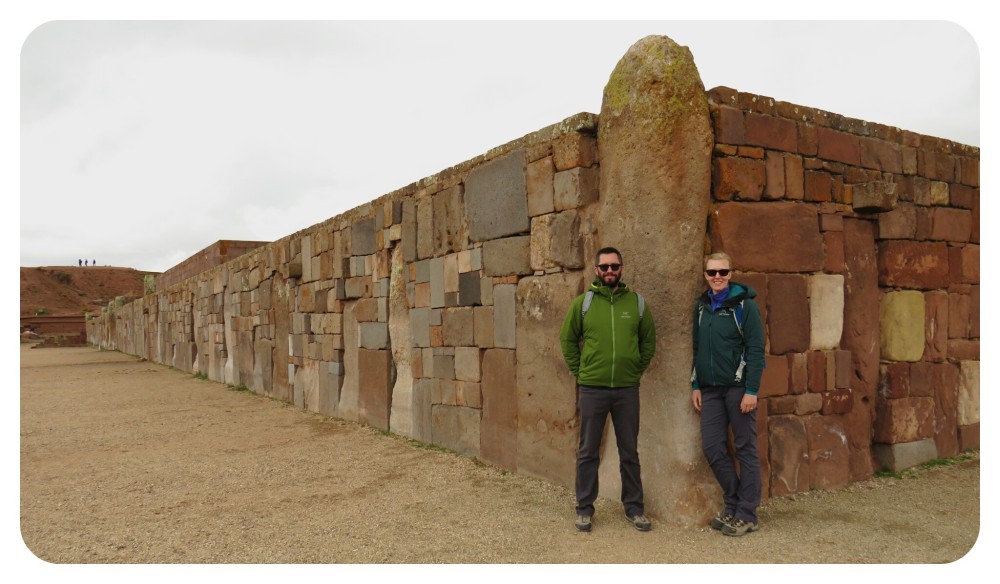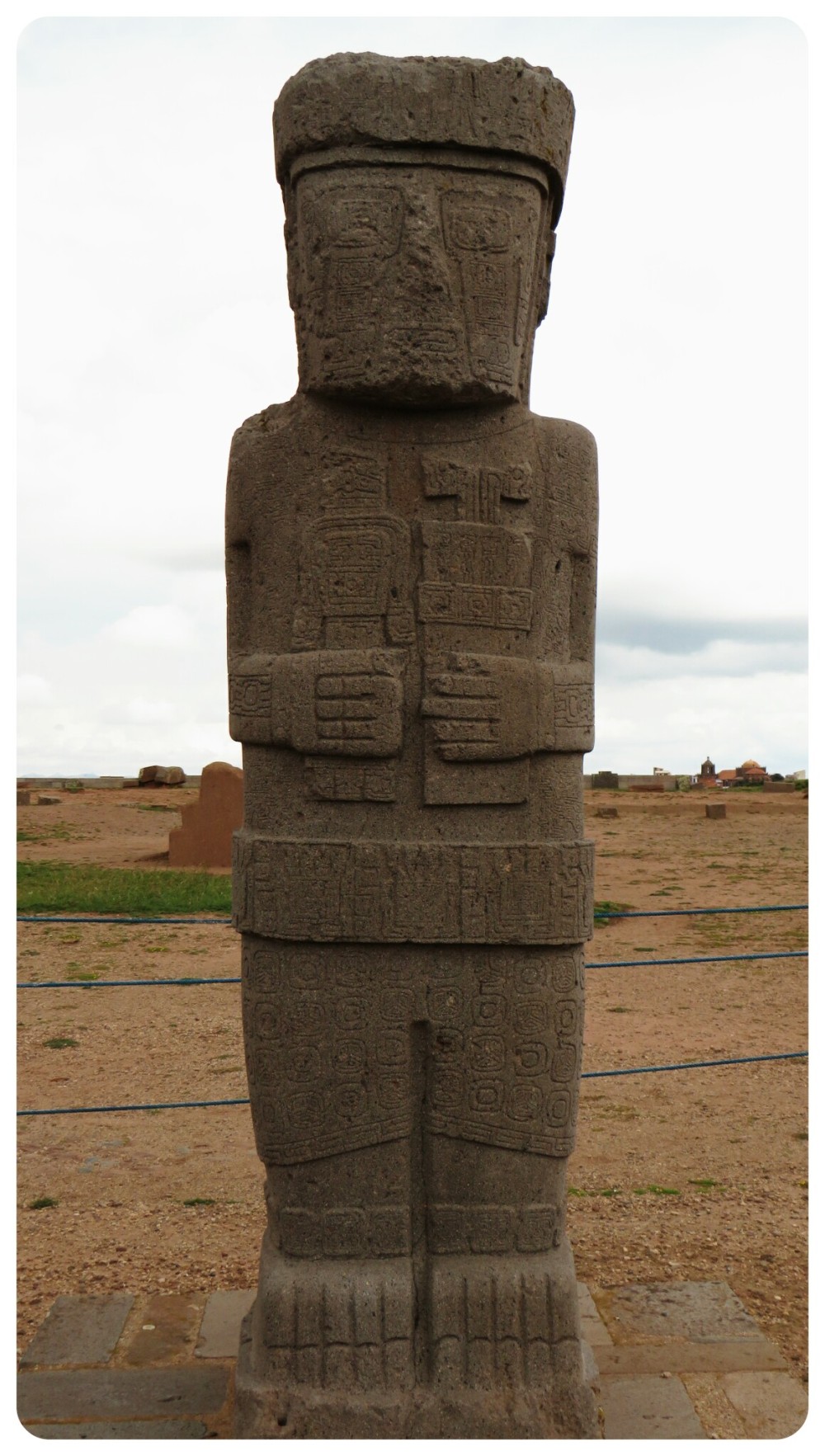We’ve discovered a tendency of finding ways to escape the cities for quieter, less hectic places. La Paz was no exception.
Our hotel had an associated tour guide company and offered a few different itineraries in and around La Paz. An excursion we opted for was a day-trip to Tiwanaku, the ruins of an ancient city near Lake Titicaca.
One perk of traveling in the off-season is that Alastair and I were the only two people signed up for the tour, making it a more casual and personal experience. Our tour guide was a very friendly and upbeat 40 year-old man with five kids (ages two to 17) who was a local of the area. He grew up speaking the native languages of Quechua (from his mother’s side) and Aymara (from his father’s side) and used these languages during our tour to communicate with the people at Tiwanaku. He started learning Spanish when he was five and English when he was 25, he loves to travel, and has instilled the joy and importance of travel in his children. (When you’re the only ones spending a whole day on a tour you get the pleasure of learning a lot about your tour guide.)
The first (logistically unnecessary but still fun and interesting) stop of the day was the Yellow Line cable car which took us up a steep hill to the El Alto neighborhood. There are four cable car lines in the city which were all built in just the past few years. Aside from being a tourist attraction, the main purpose of the cable cars is for commuters to move around the city easier while reducing traffic congestion and pollution which plague the city. They are quick, direct routes that are efficient and green!
Our driver met us at the top/end of the cable car line and we started the 2-hour drive to Tiwanaku through rural neighborhoods and the countryside. The city of Tiwanaku was the capital of a massive empire founded around 1500 BC and originally covered several square kilometers, although only a small portion of its ruins have currently been excavated. Around 1000 AD the area suffered a decades-long drought and the civilization declined, resulting in the population dying and/or moving to other areas. Our tour guide indicated that the temples and other structures were left intact when the empire collapsed because the people intended to return once the drought was over.
Unfortunately, the re-establishment never occurred and when the Spanish arrived in the 1500s the sites of Tiwanaku saw major destruction. Some structures were toppled and others were reduced to rubble to be used for construction by the Spanish in other places. Despite the fact that much of the area was destroyed and only a fraction of the area has been excavated, what remains and what is visible is an impressive display of detailed architecture, astronomical knowledge, spiritual and religious awareness, and feats of amazing manpower. The history of the site and of the people who lived here thousands of years ago still hold significant spiritual and religious importance for the Andean culture.

One small example of the amazing detail created in the artwork at Tiwanaku. It’s difficult to see in this picture, but there are several depictions of animals and spiritual references.

A photo our tour guide insisted on taking in order to provide a scale for the proportions of the walls surrounding the Kalasasaya.

Another photo our tour guide insisted on, using the Gateway of the Sun as a picture frame. This structure was laying down when it was excavated and was unfortunately broken when it was being lifted into its current position.

Metal braces were made to fit inside the indents of these rocks, locking them together to keep them tightly in place.

An example of the intricate designs used in the architecture. Quite impressive considering the tools available at the time.

A slight height discrepancy between me and the average Bolivian (it’s cool, our tour guide made a joke about it).
After a couple hours of wandering around Tiwanaku we headed back to La Paz, although with an unplanned detour. The latest cable car line, the Blue Line, had just opened the previous day and our guide was eager to check it out. He asked if we would be interested in riding it and we had no objections. At nearly 5km long, it is estimated to be the longest cable car line in the world. We got to see some interesting views of the city from different perspectives; sometimes from high above and sometimes floating right past somebody’s window. We also got to see the local Saturday street market without having to wrestle our way through the crowds. It was a fun way to end the day, especially since it was a new experience for our tour guide as well.






Some amazing carvings considering how old they are, the detail is there, and great to have a personal guide for two.
LikeLiked by 1 person
Ben likes the idea of the cable cars in the clouds, and also was excited to see “the big rock man.”
LikeLiked by 1 person